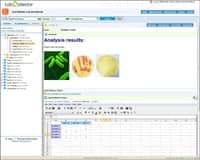
This is one of the reasons why I find new technology and pharmacogenomics so promising. bioMerieux Inc’s STELLARA™ Clinical Intervention and Patient Monitoring software, which became commercially available early this year, provides recommendations to clinicians for medication based on individual patient profiles, lab results, and other parameters. STELLARA automatically alerts the clinician when a drug interaction is likely, which increases the opportunity for intervention and decreases the chances of an adverse drug event.
Not only can such products improve patient care and safety, but they can mean tremendous cost savings as well. Adverse drug reactions are a leading cause of hospitalization and death in the United States. One adverse drug event can add thousands of dollars to a hospital stay. In fact, according to the Alliance for Pharmaceutical Care, for every dollar spent in the United States on medication, $1.60 is incurred in correcting drug issues. Many preventable adverse drug events are caused by errors in the prescribing process, and the major cause of prescribing errors is the physician’s lack of essential drug and patient information at the time of ordering.
This is why the area of pharmacogenomics is so exciting. The “one size fits all” approach to developing and prescribing drugs has had disastrous consequences in too many cases; therefore, genetic testing to predict an individual’s response to various drugs holds much promise for the future. The idea is that eventually, every patient will have his or her own genetic blueprint that is available to physicians before any medications are prescribed. Think of the difference it will make in treatment decisions when a physician can routinely use this tool to predict the response (or nonresponse) a patient will have to a particular drug.
Not unrelated to the issue of avoiding adverse drug events is this month’s industry overview on lab safety (see page 34). Writer Renee DiIulio points to the need to track errors to determine where problems are occurring and to develop processes to reduce the frequency of errors. She has put together a compelling report that I hope you will find enlightening. Let me know what you think.
Carol Andrews
Editor
[email protected]


